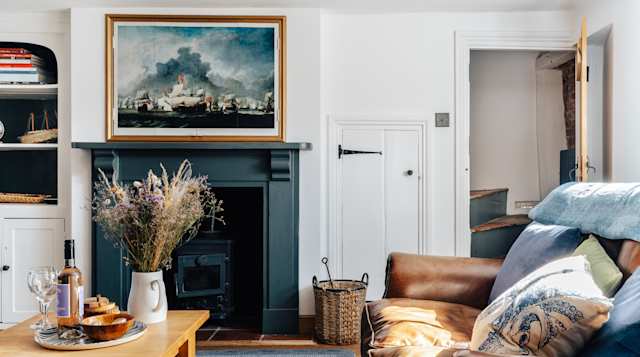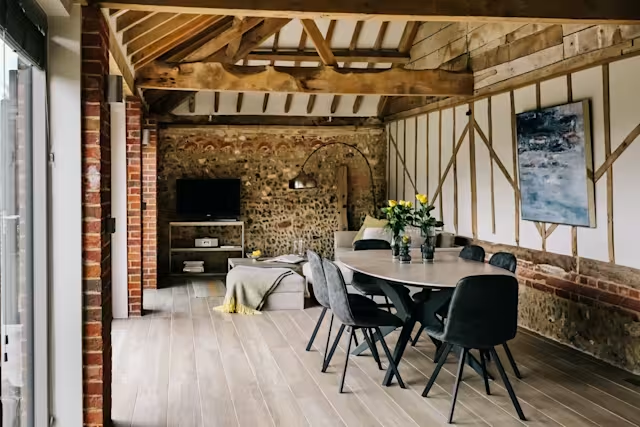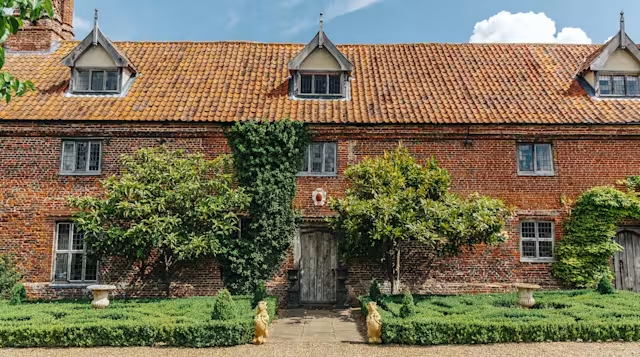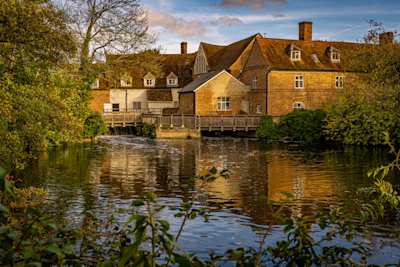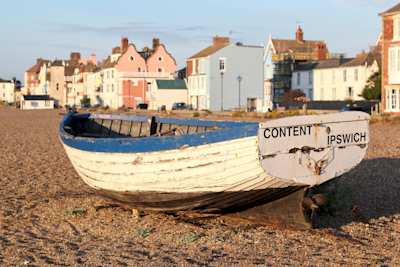Unwind in Suffolk’s Quiet Corners: How To Avoid the Busy Areas
There’s so much more to Suffolk than its holiday hotspots – here’s how to discover another side to the county
~
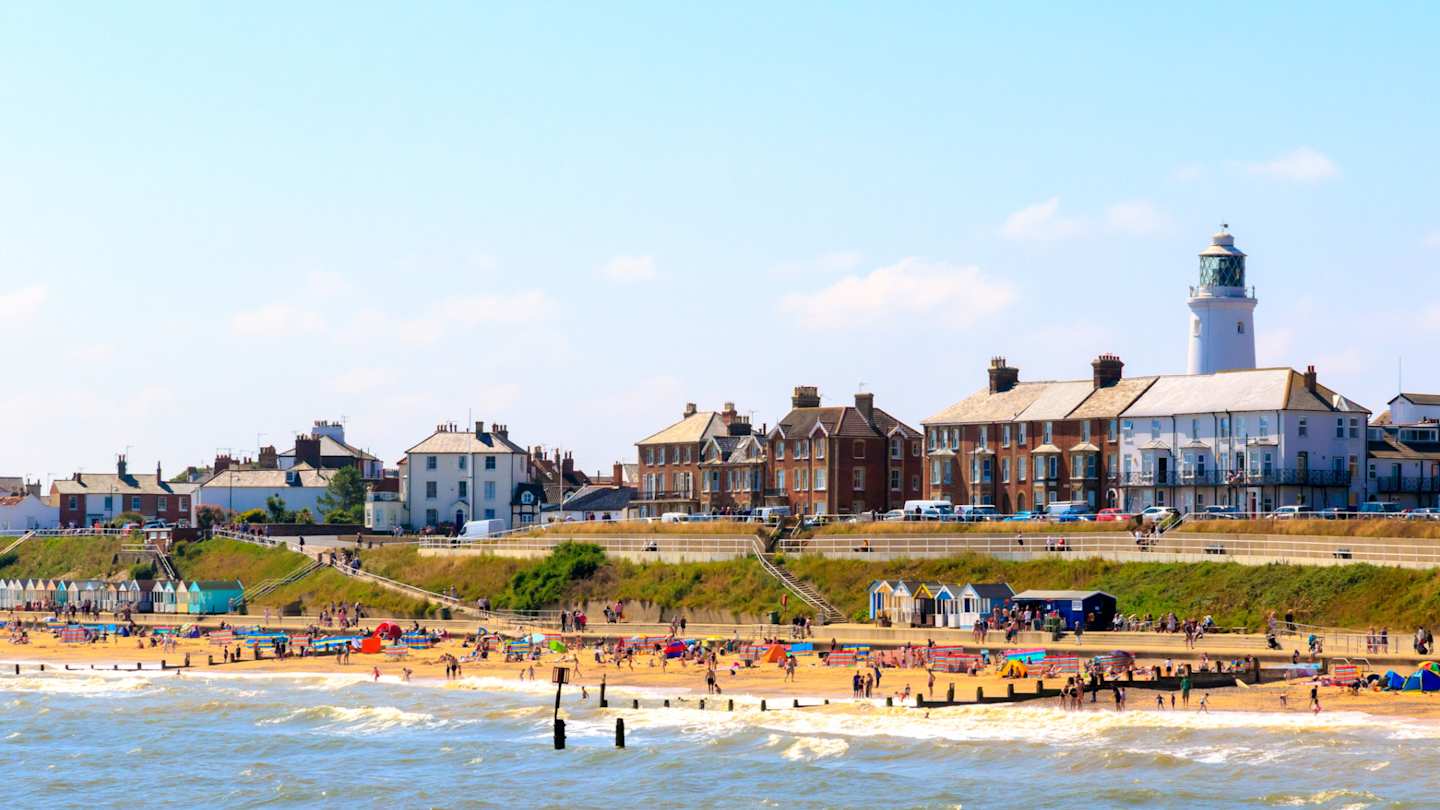
With its pretty villages, rolling green landscapes and traditional seaside towns, Suffolk offers a quintessential English holiday. It’s the ideal place to unplug and unwind, where you can spend time roaming the vast countryside, relaxing on the beach or strolling through its historic towns. With all that it has to offer, don’t be surprised if you find yourself sharing a space with other holidaymakers. However, you’ll be pleased to know that there are plenty of ways to steer clear of the crowds. Keep reading for our top tips – including the busy areas to avoid in Suffolk – put together by our travel experts at Plum Guide.
Visit in spring or autumn
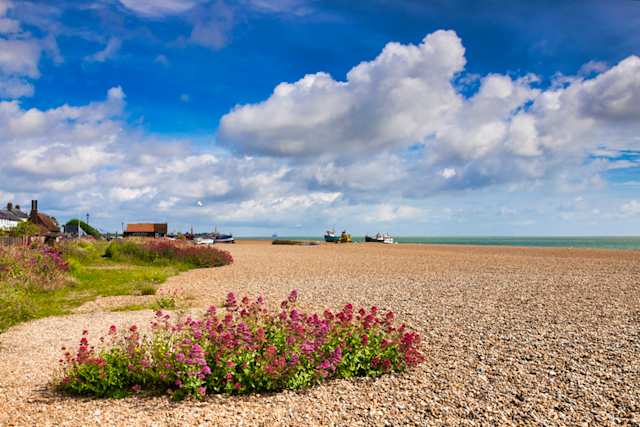
Aldeburgh's shingle beach covered in wildflowers on a spring day, blue sky and white clouds, Suffolk
When vacationing in Britain, it makes sense to plan your trip around the summer months. But that’s what everyone else is thinking, too, resulting in towns and beaches packed with holidaymakers wanting to make the most of the (rare) British sunshine. Luckily, Suffolk boasts a temperate maritime climate and rarely sees extreme weather. This means that spring and autumn have relatively mild temperatures, making it a good time to explore without the busy summer crowds.
Spring is a lovely time to visit as you’ll get to see nature come alive again in Suffolk’s woodlands, farmlands and wetland reserves. Take a walk through the woods to admire the magical bluebells in full bloom – some of the best spots include Reydon Woods in Southwold, Freston Woods in Wherstead and Bradfield Woods in Bury St Edmunds. Bring your binoculars and keep an eye out for birds and other woodland creatures, while foodies can go foraging for edible flowers, mushrooms, and leaves. If you’re visiting with little ones, one of the best activities is to pop by the many farms to meet the newborn lambs and other animals.
Autumn also boasts plenty of things to do. The colours are the main highlight of the season, with Suffolk’s coast and countryside turning spectacular shades of red, orange and yellow. Some of the best places to take in the views are Framlingham Castle, RSPB Minsmere and the Mid-Suffolk Light Railway, popular attractions that are much more enjoyable when visited off-season when there aren’t as many visitors. Those travelling with four-legged friends can take long walks on the beach, as many of them are open to dogs from October. After a day of exploring in the wild, you’ll find plenty of cosy country pubs to warm up in.
Discover lesser-known attractions

Ruins of the Church of St Andrew, near Covehithe Beach, Suffolk
As well as the popular visitor attractions mentioned above, there are also plenty of hidden gems – perfect if you're wondering what tourist areas to avoid in Suffolk. Trade the busy sands of Southwold Beach, Aldeburgh Beach and Felixstowe Beach for somewhere a little more secluded. Head to Covehithe Beach and you’ll soon find out why it’s nicknamed ‘The beach at the end of the world’. Only accessible on foot or by bicycle, its remoteness is part of its charm. Enjoy a walk or a paddle without bumping into anyone else, then after a swim, explore the ruins of the nearby St Andrews Church. Another secluded beach is Walberswick Beach, backed by sand dunes and surrounded by marsh and heathland.
Those who enjoy historic houses won’t want to miss Otley Hall. Thought to be Suffolk’s oldest house, there are 4 hectares of stunning gardens to meander through after you’ve taken a tour of the house, featuring wildflowers, a knot garden and peacocks. Somerleyton Hall, a magnificent Tudor-period building with impressive gardens and orangery, is also worth visiting.
If it’s a rainy day, take the opportunity to visit one of Suffolk’s many museums and galleries. Popular museums include the East Anglia Transport Museum, Ipswich Museum, and Long Shop Museum. However, you’ll also find plenty of lesser-known options offering unique experiences. Art enthusiasts will love Gainsborough’s House – the birthplace of Thomas Gainsborough – where you can admire the collection of his paintings, drawings and personal items. Many of Suffolk’s smaller towns will also have their own museum, such as the ones in Saxmundham and Clare. They’re a great place to spend an hour or two, viewing local artefacts and learning about the town’s history.
Stay in quiet towns and villages
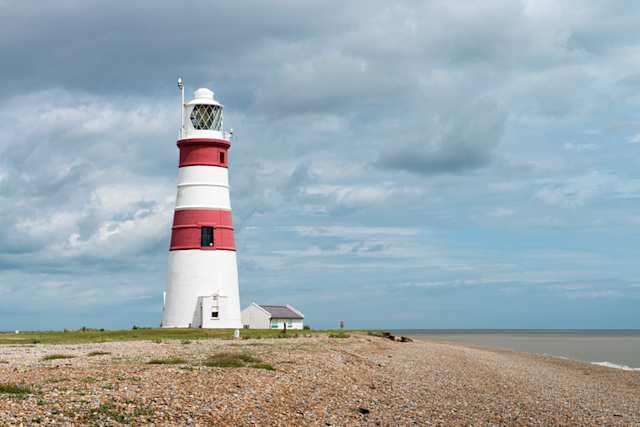
Red and white striped lighthouse on the beach in Orford Ness, Suffolk
Wondering where to stay in Suffolk? Most people who visit tend to stay in popular seaside towns like Aldeburgh and Lowestoft, while culture vultures flock to Ipswich. These are all packed during the busy season, putting them at the top of our list of places to avoid in Suffolk if you're seeking a calmer stay. But not to worry – Suffolk is full of peaceful little towns and villages that don't see as many visitors, ideal for those seeking R&R away from the crowds.
If you're after a quieter coastal town, Kessingland is a lovely option. Just south of Lowestoft, the village is home to a long stretch of golden sands, which are much less commercial than other beaches. The beach is adjacent to the Benacre National Nature Reserve, where, if you're lucky, you can spot rare birds. Orford is another idyllic seaside destination. Nestled in the Suffolk Coast and Heaths AONB, this pretty village is surrounded by picturesque nature. Visit the well-preserved Orford Castle and get lost in the labyrinth of passages. Nearby is Orford Ness, a nature reserve based around a shingle spit. Home to lagoons, waterways and marshes, a walk here will bring you face-to-face with some splendid vistas.
Don’t mind swapping the coast for the countryside? Worlingworth is a rural village surrounded by farmland, with plenty of walks in the local area. When you do feel like a bit of action, it’s just a fifteen-minute drive to the market town of Framlingham where you can browse the shops and visit the famous castle. Kersey is another great choice, a picture-postcard village with thatched cottages and timber-framed houses. It’s widely regarded as one of the prettiest villages in Suffolk, and you’ll want to bring your camera to photograph The Street, the main road lined with pink and orange pastel houses.
Spend time in the countryside
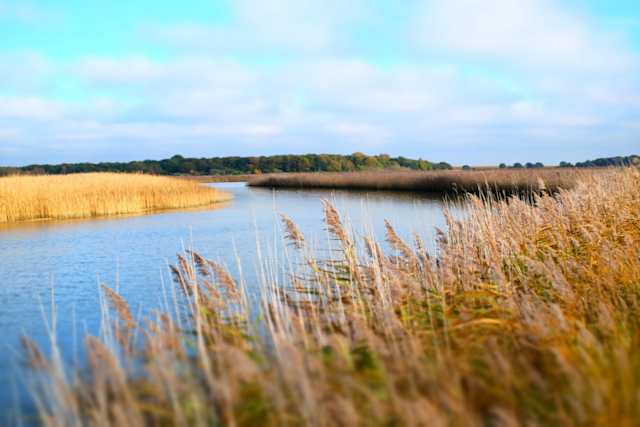
A body of water surrounded by tall brown grass, near Snape on the Suffolk Coast & Heaths AONB, England
If you're wondering what other busy areas to avoid in Suffolk, we suggest venturing into the great outdoors for a bit of peace and quiet. Suffolk is predominantly rural, with an abundance of natural beauty to immerse yourself in. The Suffolk Coast and Heaths AONB covers around 400 square kilometres and includes everything from popular Blue Flag beaches to quiet shingle shores. Head inland and you’ll find heathland and marshes, as well as rivers and estuaries home to a wealth of wildlife like migratory birds, insects and rare plants. Take a walk or cycle along the coastal paths, passing by quaint villages and ancient churches, as well as the various visitor centres where you can learn more about the AONB.
You can also get on the water in The Broads National Park, which covers the counties of Norfolk and Suffolk. With over 200 kilometres of navigable waterways, the park is best explored from the water. Rent canoes, kayaks or boats and glide down the rivers and streams, taking in the tranquil views. As you make your way through the marshes and wetlands, keep an eye out for wildlife such as birds, otters and Britain’s largest butterfly, the swallowtail.
More adventures await in Thetford Forest. Expanding over north Suffolk and south Norfolk, there is a whopping 19,000 hectares to discover in Britain’s largest pine forest. Bring your walking boots and take on the variety of walking trails, many of which lead to scenic viewpoints. There are also fascinating archaeological sites and the remains of WW2 structures. Just across the border in Norfolk is Grime’s Graves, a Neolithic flint mine where you can head deep underground to see the black flint. Meanwhile, keen cyclists can enjoy the range of trails, from family-friendly options to challenging routes for mountain bikers.
Explore by bicycle
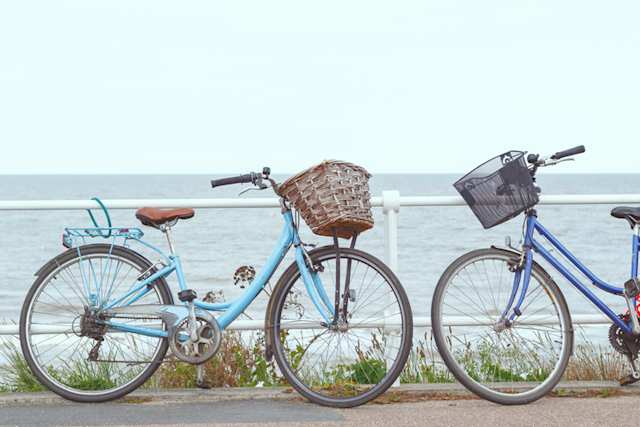
Two blue bicycles, one with a woven basket, chained to the fence on the seafront promenade in Southwold, Suffolk
Speaking of cycling, this is one of the most effective ways to get off the beaten track – perfect if you're keen to avoid areas in Suffolk that are congested with people. The county is a cyclist’s paradise, with diverse landscapes and unspoilt views around every turn. You’ll get to navigate narrow lanes and pathways, which is a great way to avoid main roads and built-up areas. Suffolk’s coastline is a beautiful place to roam on two wheels, taking you through seaside villages and dramatic coastal scenery. Don’t miss the Shotley Peninsula, where you can swap your bike for watersports.
Inland, you’ll find picturesque areas such as the Waveney Valley and the idyllic Constable Country, named after painter John Constable, who was born in Suffolk in 1776. Not much has changed since his time, and you can cycle through the landscapes that he painted, from lush meadows to the paths along the River Stour. Cycling is a fantastic way to connect with nature, appreciating its beauty without the hustle and bustle of urban spaces. As you cycle through sleepy villages, be sure to stop by the many country pubs and award-winning restaurants to see exactly why Suffolk is such a popular place for foodies.
